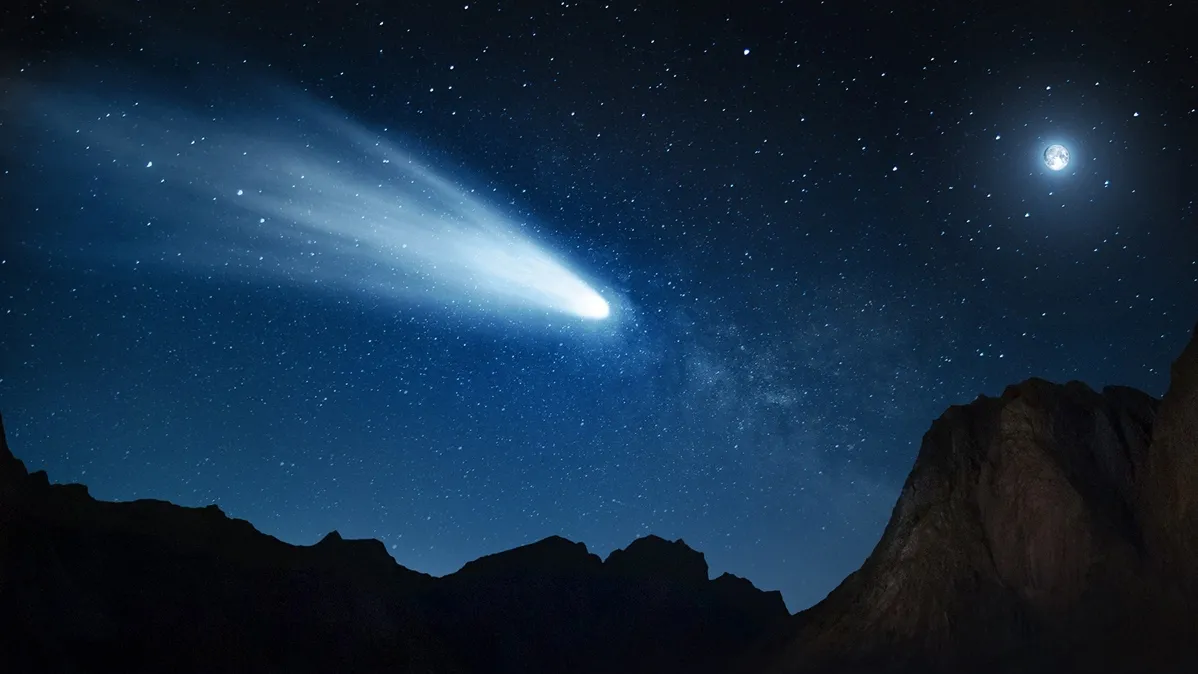Shantanu Naidu | DPS Press Officer | (917) 373-8840 (cell) | dps.press@aas.org
Rick Fienberg | AAS Press Officer | (202) 328-2010 x116, cell: (857) 891-5649 | rick.fienberg@aas.org
Joe Gutierrez | CSUSB Office of Strategic Communication | (951) 236-4522 | joeg@csusb.edu

The object officially designated P/2019 LD2 (hereafter LD2) has sparked excitement among astronomers since it was discovered by the ATLAS project, an asteroid threat detection system based in Hawaii, on June 10, 2019.
At the 52nd annual meeting of the American Astronomical Society (AAS) Division for Planetary Sciences (DPS) on Oct. 28, Laura Woodney, Cal State San Bernardino professor of physics and astronomy, discussed the latest research of LD2 by a team she led.
The AAS/DPS news release follows:
P/2019 LD2 (ATLAS): An Object on the Cusp of Metamorphosis to a Jupiter Family Comet
The object P/2019 LD2 (ATLAS) (hereafter LD2) has sparked excitement among astronomers since it was discovered by the ATLAS project, an asteroid threat detection system based in Hawaii, on June 10, 2019.
Given a comet designation because of the presence of a coma, LD2 was quickly discovered to have the orbital parameters of a Centaur, a small icy body found orbiting the Sun between Jupiter and Neptune. Generally thought to be rich in volatile ices Centaurs sometimes appear as cometary bodies, but they are too far from the Sun for their activity to be driven by the water-ice sublimation process that is typical of most comets. LD2 was also found to be in an unstable, transitional orbit that is evolving towards becoming a Jupiter Family Comet (JFC) in the next 40 years (Kareta et al. 2020, Steckloff et al. 2020, Hsieh et al. 2021). Observations of LD2 afford us the opportunity to thoroughly characterize an object as it transforms into a comet and begins sublimating water ice in significant quantities for the first time in the history of the solar system.
The latter is a bold statement, given the frequently complex dynamical history of small bodies in the solar system. Interaction with the giant planets can pass them into the inner solar system and back. However, the orbit-modeling of Steckloff et al. 2020 demonstrates that LD2 is unlikely to have ever entered the water sublimation regime before. Additionally, LD2 is currently in a Centaur-Comet orbital Gateway (Sarid et al. 2019), a recently discovered region through which many Centaurs pass just prior to entering the JFC population. Moreover, visual observations by the amateur community show that LD2 generated a small coma last year, so it appears to be starting to outgas and eject dust. It is critical to obtain baseline observations before LD2 begins to experience significant water sublimation.
Thus, a team led by Dr. Laura Woodney at California State University, San Bernardino used the NASA Infrared Telescope Facility (IRTF), Gemini North, and the Arizona Radio Observatory 10-m Submillimeter Telescope obtained near simultaneous observations. No gas was detected, and upper limits on current CO coma abundance are consistent with a kilometer-scale nucleus. Coma structure observed with Gemini North and reflectance spectra from IRTF show that LD2 is experiencing ongoing and stable activity with evidence of water ice grains in its coma.
Ongoing studies of LD2 over the next few decades could greatly improve our understanding of how bright comets evolve.
To encourage the community the team of Dr. Woodney, Dr. Gal Sarid and Dr. Maria Womack have begun an observing campaign co-ordination website that can be found at the P/2019 LD2 Observing Campaign blog. This will become a resource to encourage and connect observers so that disparate data sets may be brought together to unlock the secrets of the Centaur that will soon be a comet.
Video of Woodney’s presentation is posted at the AAS Press Office YouTube page. It is included in the video titled “DPS 52 Wednesday Press Conference.” and begins at the 12:30 mark.
See also the related article, “Physics professor Laura Woodney studies the secret lives of comets.”